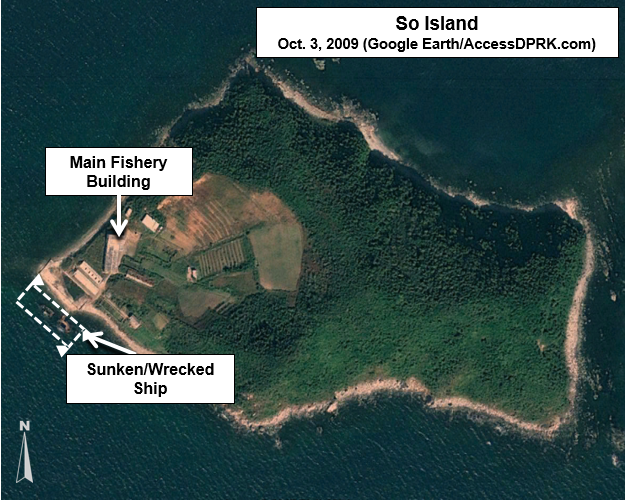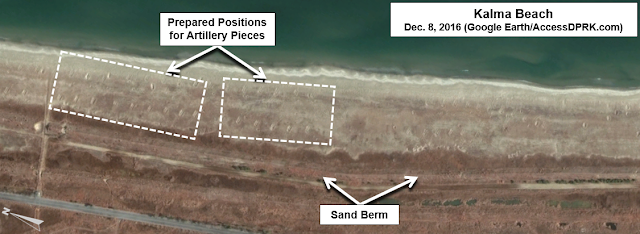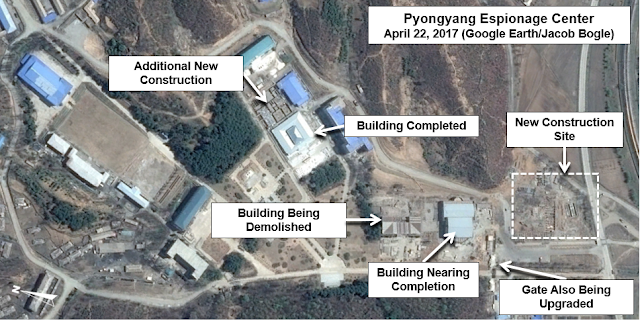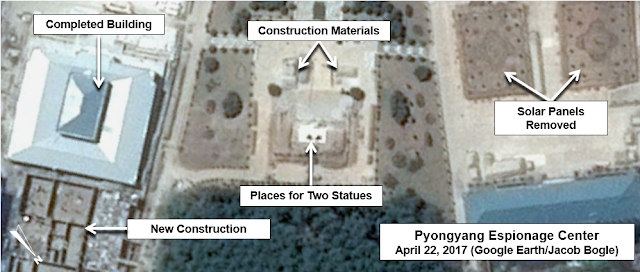On September 3, 2017, North Korea conducted its sixth and largest (by far) nuclear test. North Korea's only nuclear test site is Punggye-ri in North Hamgyong Province. At this point I want to say that this post is speculative in nature and that there is little concrete evidence to support what I am suggesting. However, there is anecdotal evidence and a logic to it. Enough so that I feel this is worth discussing.
The main tunnel at Punggyi-ri also happens to be less than 2 miles away from the boundaries of the Hwasong concentration camp (Kwan-li-so 16).
The apparent location (based on USGS information) of this most recent nuclear test lies a mere 0.3 miles (0.5 km) away from the camp fence, and North Korea's first test in 2006 appeared to have taken place inside the camp itself (underground, of course).
There are multiple reports by defectors (including testimony by Ahn Myong-chol, a former guard at Camp 22), that North Korea has a history of using prisoners in medical experiments, including testing chemical weapons, as well as prison labor for the construction of sensitive military facilities, including underground sites.
Based on the relative locations[n1] of each of the nuclear tests, the underground tunnel system is massive, with the majority of test sites more than 3 miles away from the main tunnel entrance. The Sept. 3, 2017 test is almost 5 miles away! This means lots and lots of tunneling work.
A few small mounds of debris can be seen at the entrances of the various tunnel entrances; however, the amount of debris is nowhere near enough as would be required for excavating a tunnel a mile long, let alone multiple tunnels. A very basic tunnel 1 mile long, six feet tall, and six feet wide would create 190,080 cubic feet of material. However, an image released by North Korean TV suggests their tunnels aren't simply a straight line (which could easily become disastrous during testing).
English notation provided by F. Pabian and S. Hecker/Bulletin of Atomic Scientists
This suggests that the North Koreans are using material from new tunnels to back fill the old tunnels after each nuclear test, as the growth of the outside debris mounds do not entirely reflect the growth that would be needed if they were dumping all of the excavated materials outside. The fact radioisotopes can be detected outside of the country after some tests, shows that their testing site is far from sealed, thus it would be necessary to mitigate the slow continual release of radiation by filling up used tunnels with the material taken to construct new ones. Unfortunately, the discovery of visible changes to the surface of the mountain raises the likelihood that further releases of radiation will happen.
Back to Hwasong, it's not beyond the realm of possibility that the regime is taking advantage of this nearby and captive workforce to do the difficult and dangerous task of constructing these testing tunnels. There is a fair amount of evidence that prisoners are used to construct the thousands of tunnels and underground facilities that have turned much of North Korea's ground into Swiss cheese. And, there are even occasional but brief comments that can be found in media sources that touch on the idea of these prisoners being used to do the hard work at Punggye-ri.
Average citizens are subjected to terrible conditions in the country's coal mines, and even in uranium mines and enrichment facilities safety is practically nonexistent, with workers developing multiple radiation-related illnesses. Political prisoners on the other hand aren't even considered citizens. Their very title of "human" appears to vanish along with every right and privilege that otherwise exists in North Korea.
Using these men to dig, repair, and fill the tunnels has several benefits to the regime. Here are four benefits that immediately come to mind:
1) The government doesn't have to worry about paying wages or properly feeding them, saving large sums of money.
2) There are no families to deal with whenever a loved one comes home with a shattered leg or dying from radiation exposure (or coming home in a body bag).
3) Due to the way such prisoners are managed, using them provides a large level of greater secrecy and security. Even loyal soldiers may inadvertently spill sensitive information to friends or family. Who are slave laborers living behind electrified fences going to tell?
4) Using expendable lives saves the lives of more valuable people.
We do know that the tunneling process itself is fairly basic. North Korea doesn't have the ability to employ the large modern mining or tunneling equipment other industrial countries have. Using dynamite, hand tools, brute force, and small carts to carry away rocks is about all they have. Satellite imagery confirms this is true at Punggye-ri, too, as the simple equipment can clearly be identified.
Beyond the horrors associated with working hour after hour and week after week near incredibly toxic mixes of radiation and heavy metals, there are also dangers faced by nearby populations.
The northern part of Korea has always been neglected. This was the case during the historic dynastic period and was the case during North Korea's famine - when supplies were cut off and redirected to the more "important" capital region. Punggye-ri is located in the northernmost province. Of North Hamgyong's 2.5 million inhabitants, nearly 2 million lie directly east and north of the nuclear site, which means any radiation release will spread to those areas on wind currents.
Absent full-on containment failure, where plumes of material is tossed into the atmosphere, partial failures can still release Cesium-137, Iodine-131, and Strontium-90, all of which can spread by the wind and contaminate the ground (and thus the grass, which in turn will contaminate any animals eating that grass and eventually the people eating the animals). Seepage of Krypton-85 and Xenon-133 through cracks in the mountain can also contaminate the area. Krypton-85 has a half-life of 10.7 years, meaning if any was released by the first nuclear test back in 2006, half of it is still hanging around. To add context and bring this closer to home, the National Cancer Institute published a study in 1997 that showed 2,800 cases of thyroid cancer in the US each year can be attributed to our own nuclear tests during the "underground era" (1962-92).
Continuing research by 38 North suggests that major fractures may have developed in the mountain, and that further large-yield nuclear tests could severely destabilize the site and release enormous amounts of radioactive debris.
We may never know for certain if prison labor was used to build these miles of tunnels and what, if any, effects have happened as a result of radiation contamination, but the fact there's enough anecdotal evidence and internal logic to support the basis of this post is very disturbing. The world already knows about the routine torture, rape, murder, forced abortions, and starvation that goes on in North Korea's prison camps. The world knows about the lasting harm to people living in the US and on small Pacific islands near nuclear testing sites. I don't see what's so difficult about expecting that the two scenarios would merge in North Korea when all of the pieces are laying in front of us.
--Jacob Bogle, 9/16/17
JacobBogle.com
Facebook.com/JacobBogle
Twitter.com/JacobBogle
Note
1. All of the locations are based on coordinates given by the United States Geological Survey. These coordinates are only approximate and may be off by over a mile.

































